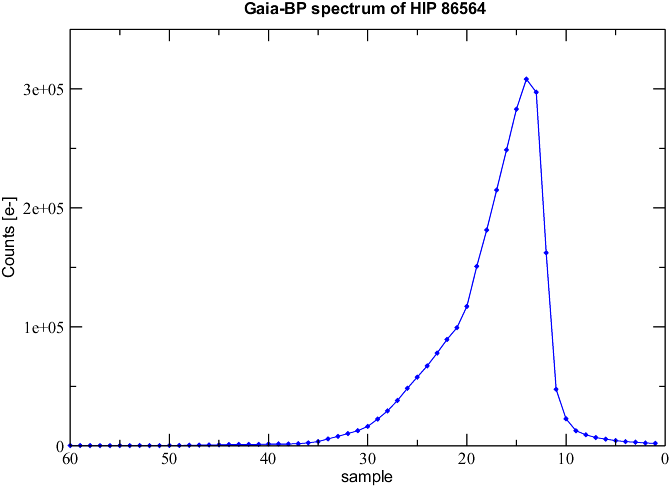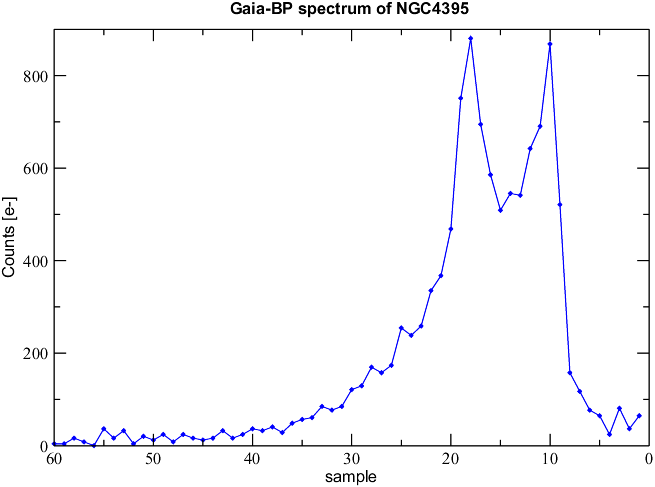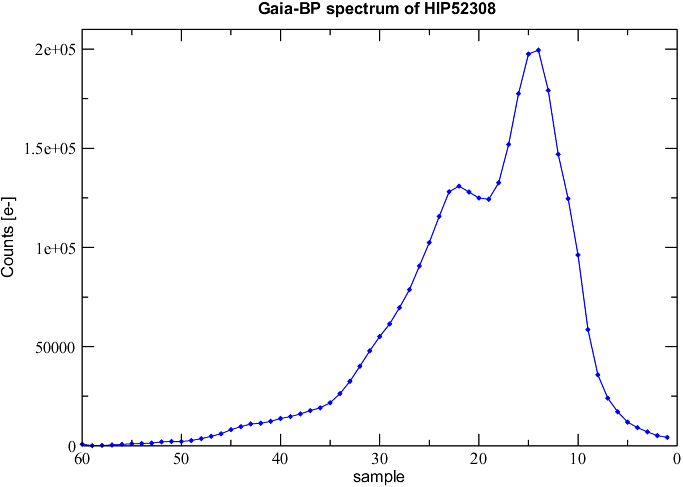iow_20140605 - Gaia
Gaia BP/RP and RVS Spectra |
|
|
The data below were collected as part of the ongoing commissioning activities to test and fine-tune Gaia. Don't miss the article about the spectra on the ESA Gaia blog. |
|
| Gaia BP/RP spectra of seven stars | |
|
|
|
|
This plot shows temperature information for seven different bright stars (labelled, along with their spectral types). This information is extracted from Gaia's photometric instrument, which generates two low-resolution spectra, one covering blue wavelengths and the other red wavelengths. The blue photometer (BP) receives light with shorter wavelengths (from 330 nm to 680 nm), and the red photometer (RP) receives light with longer wavelengths (from 640 to 1050 nm). The photometers record the total intensity of each star across these wavelengths, and also make it possible to determine the stellar temperatures. A pair of red and blue spectra is shown here for each of the seven stars. The plot is arranged with cool stars (approximately 3000ºC) at the top, to hotter stars (around 8000ºC) at the bottom. As expected, the hottest stars are relatively stronger in Gaia's blue photometer, and weaker in the red photometer. Conversely, the cooler stars are brighter in the red photometer. Some of the 2D spectra plotted here are not optimally centred inside the window. This will still be refined during commissioning. |
|
| ------------- | |
| The two plots below show the collapsed 1D spectra for the seven stars used in the first plot (one for BP and one for RP). | |
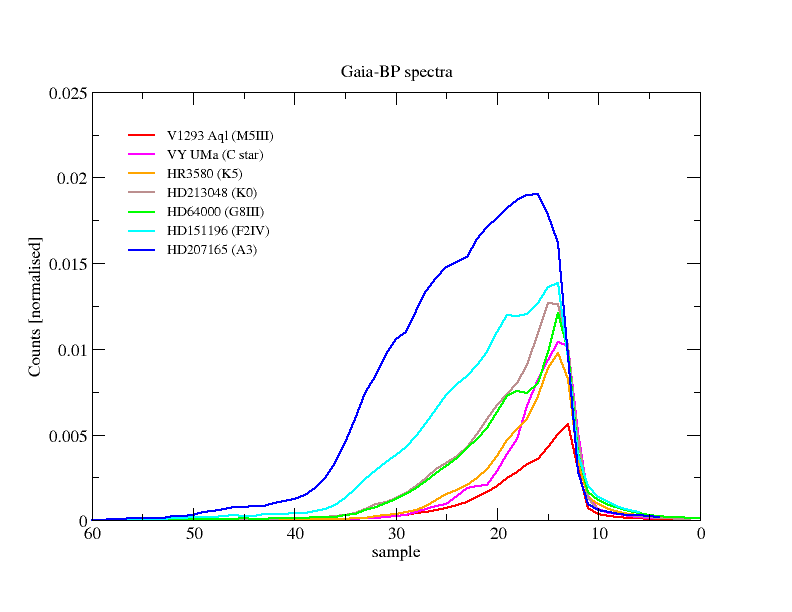 |
|
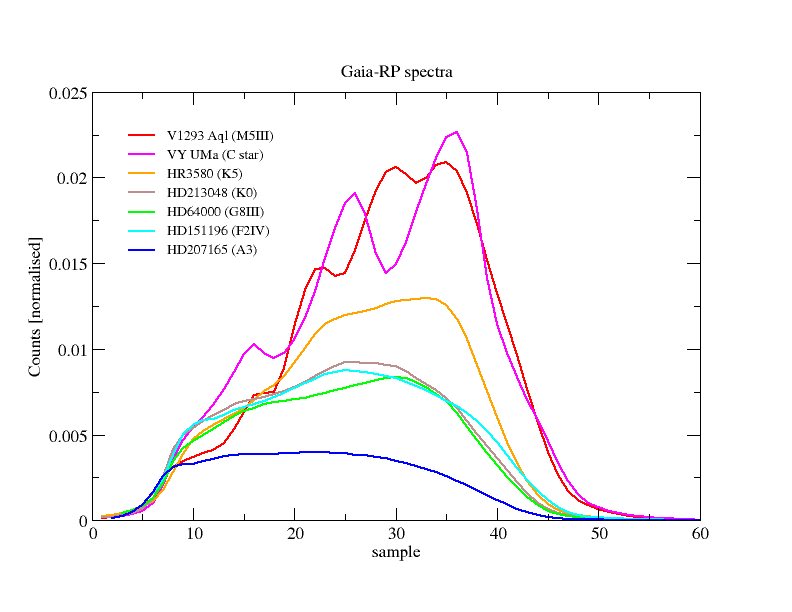 |
|
| HIP 86564 RVS, Narval, BP and RP spectra | |
| The plots below show the BP, RP and RVS spectra of the star HIP 86564, showcasing Gaia's astrophysical capabilities across the spectrum. | |
| ------------- | |
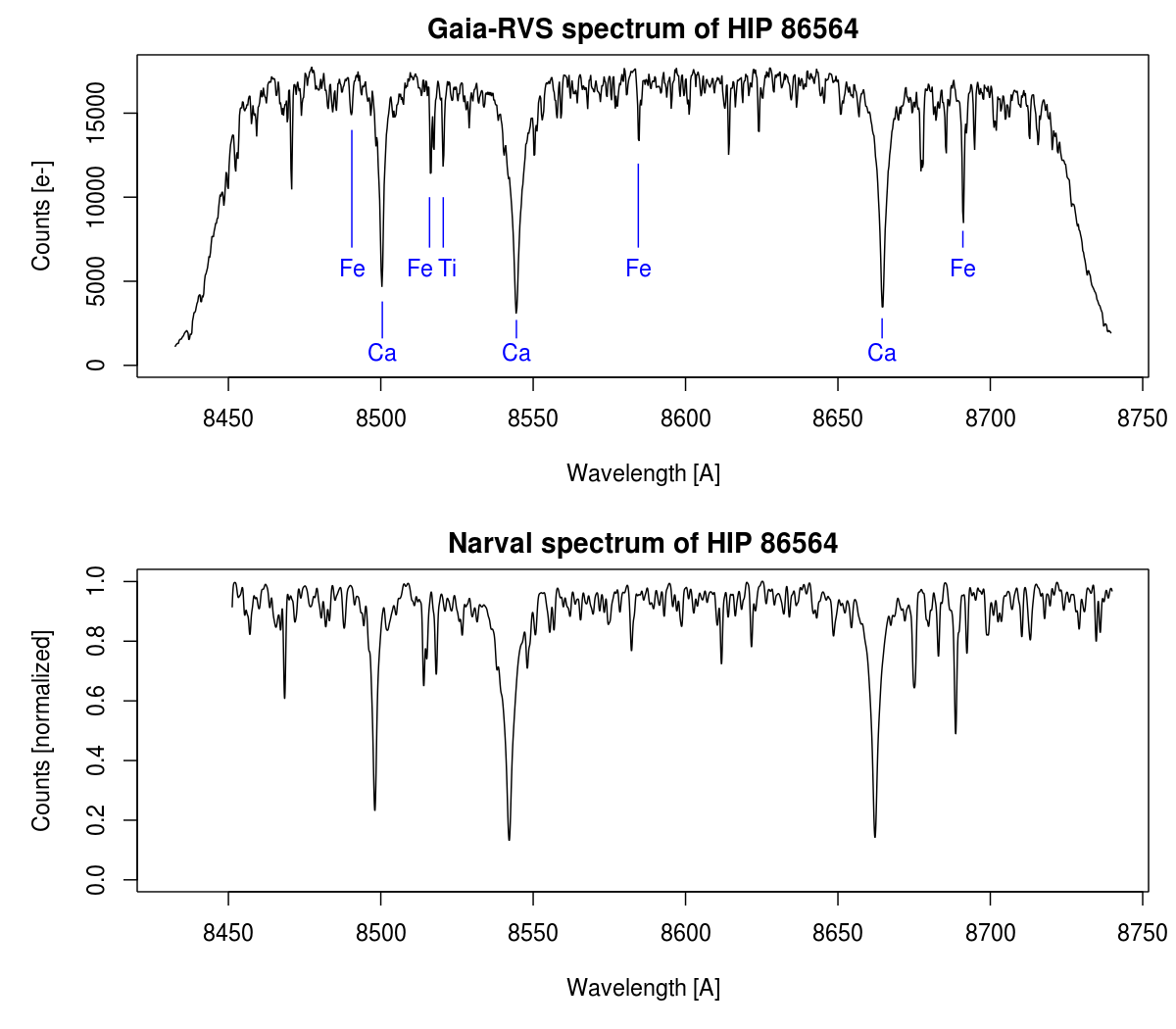 |
|
|
These two plots show the spectrum of the star HIP 86564 observed with the Gaia-RVS (top) and Narval (bottom), a stellar spectropolarimeter, installed on the two meter diameter Bernard Lyot Telescope at the summit of the Pic du Midi in the French Pyrenees. Narval spectra have been observed by the DU640-GBOG group before launch in order to prepare for the commissioning and calibration of the RVS. These ground-based Narval spectra are now being used during commissioning to check that the characteristics of the RVS are nominal. By comparing the RVS (top) and Narval spectrum of HIP 86564, a bright V=6.64 cool red star (K5 spectral type), one can see that Gaia's RVS resolving power is very good. Gaia-RVS spectrum: The spectrum has been recorded on FoV 0, CCD row 4 strip 15 at cycle 662.27 (Saturday 12 April 09:50:44 UTC) and has the transitId 9155227567407605. HIP 86564 has Gaia sourceId 1634325456600540032. Narval spectrum: This Narval spectrum was part of the monitoring and optimization of the RVS resolving power. On the plot the Narval spectrum has been convolved to the nominal resolving power of the RVS: R=11500. The resolving power determines the thinness of the spectral lines (the higher the resolving power, the thinner the lines). |
|
| ------------- | |
 |
|
| Transit of UTC 2014-04-26 05:50:23.475759989. The dots are plotted to illustrate the sampling of the spectra. | |
| QSO & Active galaxies: NGC4395 BP/RP spectra | |
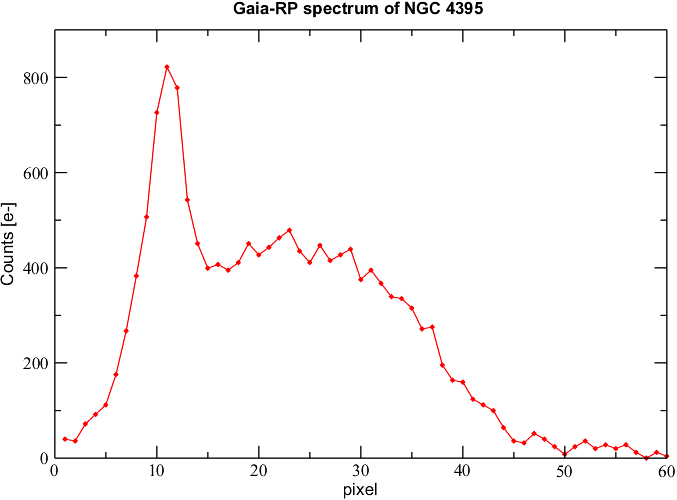 |
|
| NGC4395 is a Seyfert 2 Galaxy. Transit at UTC 2014-04-25 21:08:24.569503746. | |
| HIP52308 BP/RP spectra | |
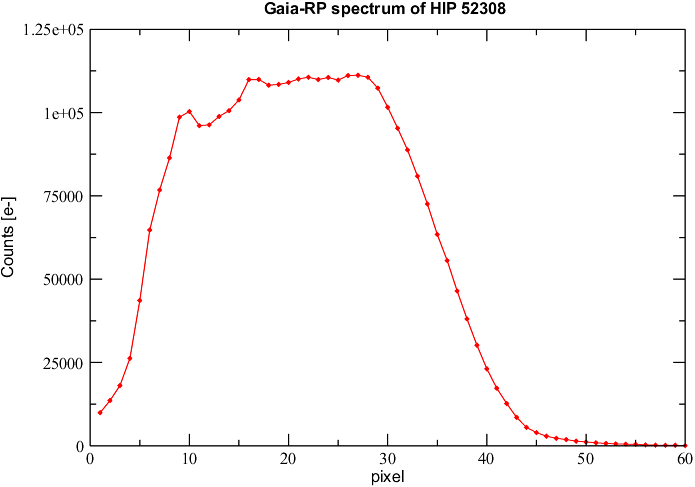 |
|
| HIP 52308 is a SB1 star (WN7h+O9III-V). The above plot shows the transit at UTC 2014-02-21 23:49:03.751703624. | |
| BP/RP spectra of a star with VPU mag = 11 | |
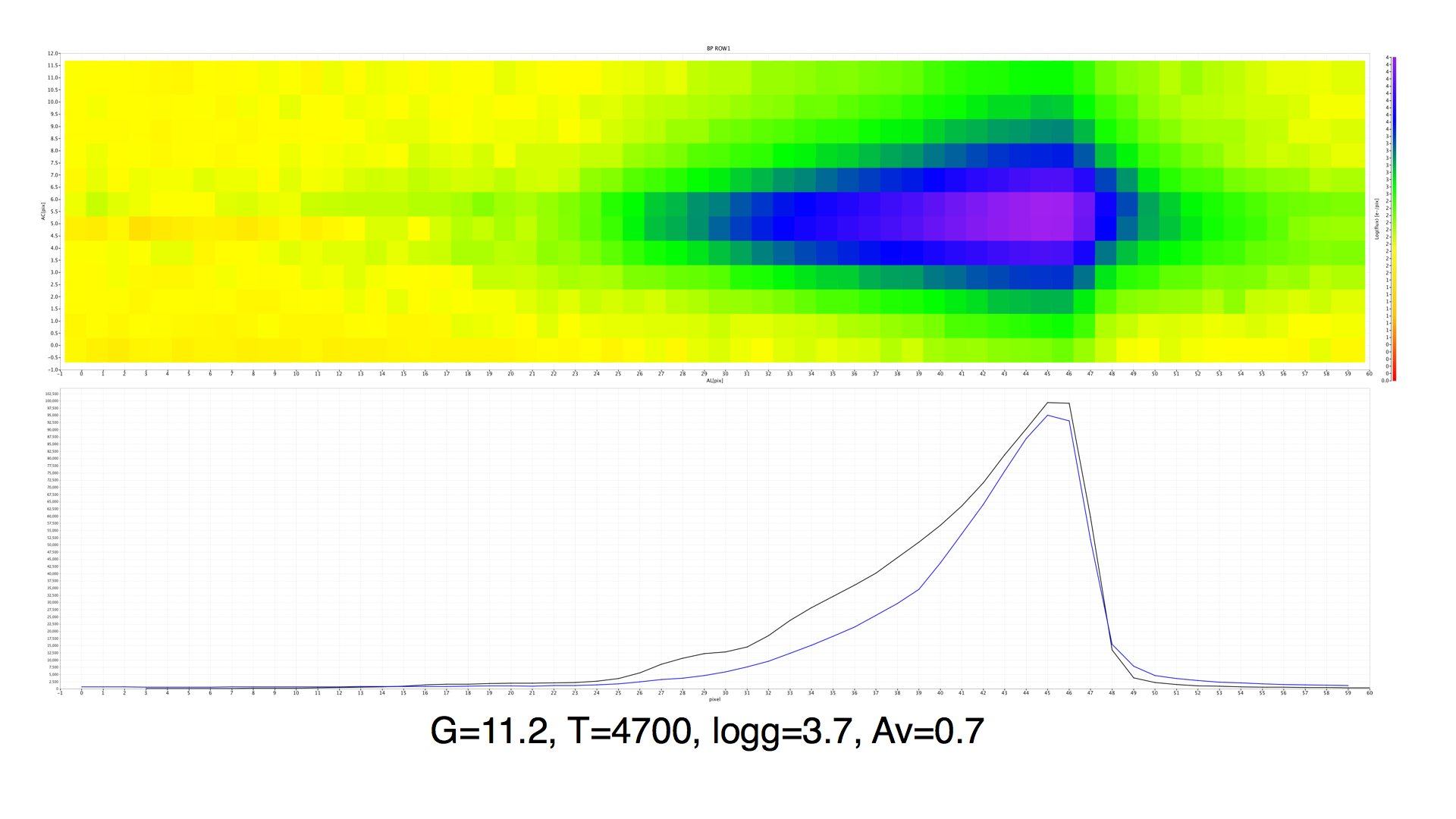 |
|
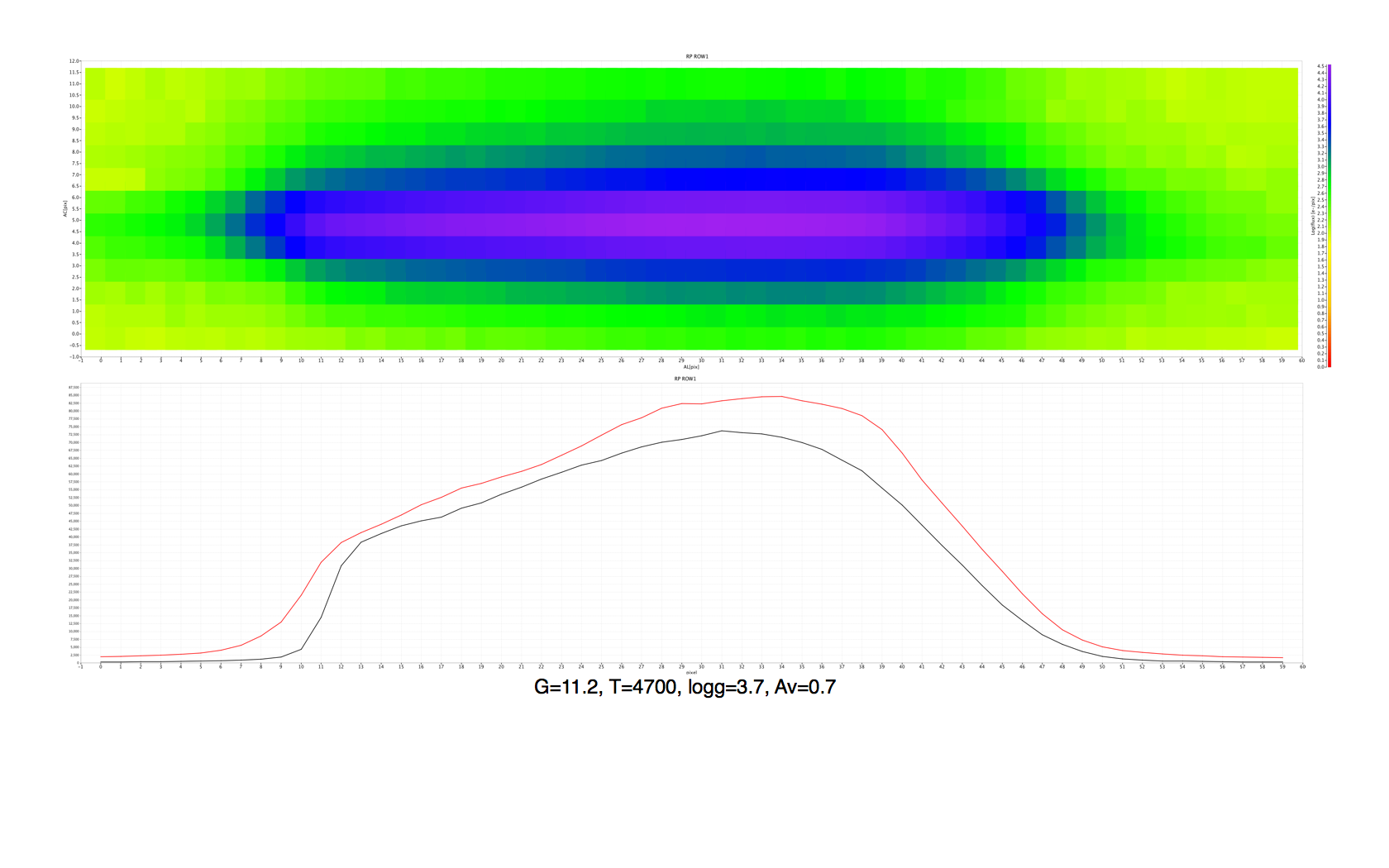 |
|
|
These are images of the same star (with VPU mag = 11), observed in ROW 1 at UTC 2014-04-23T18:25:21.176166397. The plots use raw data where just a nominal bias value was subtracted and the counts were converted from ADU to electrons, so no other processing (such as background subtraction or calibration) was carried out. The 2D images are plotted in a logarithmic colour scale. The 1D spectra (in blue and red respectively for BP and RP) were obtained by binning in the AC direction. Just for visual comparison, a simulated spectrum is shown in black: the integrated (not calibrated) colour BP-RP ~ 1.14 was calculated and this corresponds roughly to V-I~1.0 following GAIA-C5-TN-UB-CJ-041 transformations. The simulation was made with XpSim (GAIA-C5-TN-LEI-AB-029), with the following astrophysical parameters: G=11.2, T=4700, logg=3.7, Av=0.7. |
|
| credits: ESA/Gaia/DPAC/Airbus DS | |
| [Published: 05/06/2014] | |
|
All images are also available in the Gaia Media Gallery. |
|
- Removed a total of (11) style text-align:justify;
- Removed a total of (1) border attribute.
- Removed a total of (1) cellpadding attribute.
- Removed a total of (1) cellspacing attribute.
Image of the Week Archive
- Removed a total of (1) border attribute.
- Removed a total of (1) cellpadding attribute.
- Removed a total of (1) cellspacing attribute.








































 Sign in
Sign in
 Science & Technology
Science & Technology

